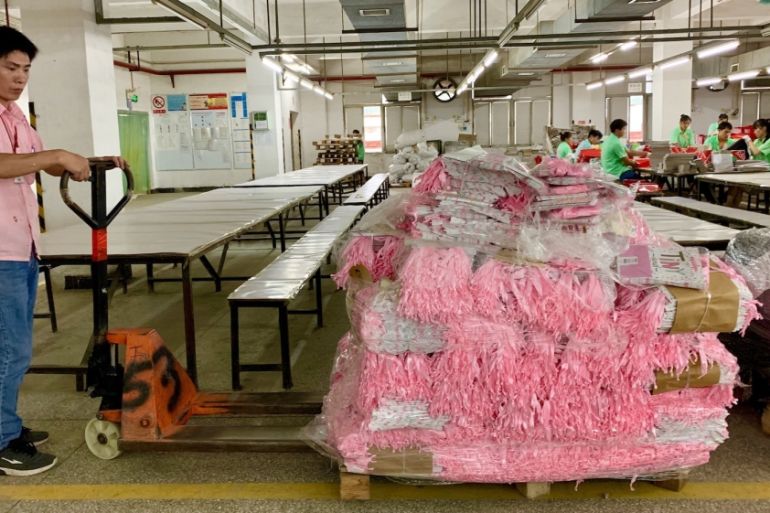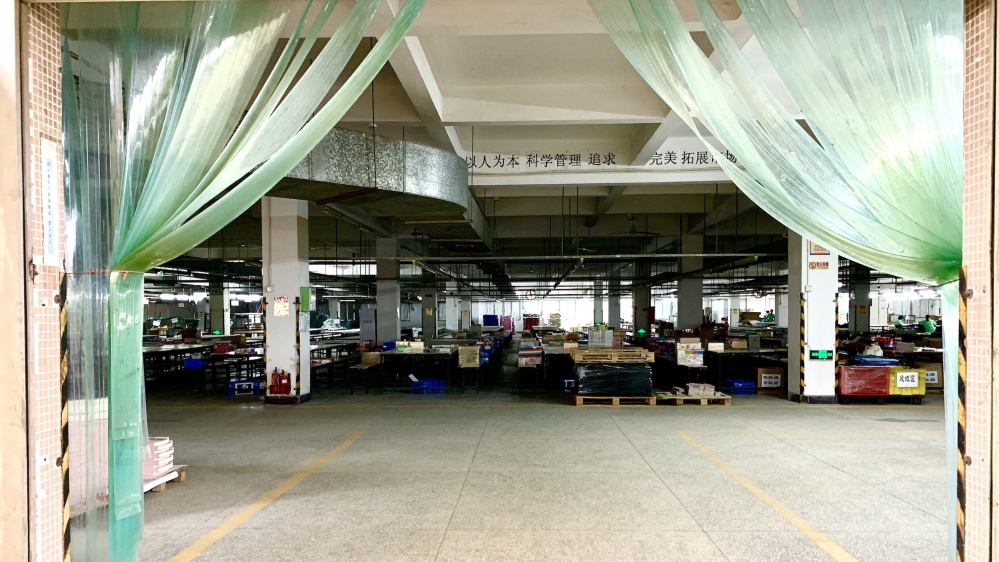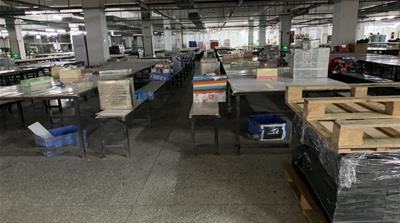Christmas cancelled: Chinese factories feel chill of US trade war
Existing and looming tariffs are shrinking production at US export-focused factories. Some are moving to Southeast Asia.

“See all those machines?” Godfrey Chan, managing director of Max Fortune, points at a section of his factory, where row upon row of industrial printers sit in the dark. “They’ve been idle since the tariffs came in.”
On the factory floor, stacks of glossy paper are being churned out and embossed with images of snowmen and Santa Claus. “The idea of wrapping presents is not a Chinese tradition, of course, most of our goods are for export to western markets. Seventy percent of it is sent to the United States,” Chan told Al Jazeera on a visit in June.
Keep reading
list of 4 itemsPolitics and convenience drive Mexico to be US’s top trading partner
Will Xi and Biden mend US-China relations at the APEC summit?
UK warns of Russia laying ‘sea mines’ to deter Black Sea cargo ships
Based in Dongguan, part of southern China‘s manufacturing heartland, Max Fortune established one of the country’s first printing factories, producing wrapping paper and festive gift bags since 1993.
With six months to go before Christmas, it should be his busiest time of year. Normally, Chan says, his workers would be pulling double shifts to get the shipments out. Today, operations are running at just 60 percent capacity.
Max Fortune’s operation is a casualty of the tit-for-tat trade war between the world’s two biggest economies. Almost all of Max Fortune’s goods are subject to Washington’s 25 percent tariffs.
This week is expected to be a watershed moment in the US-China dispute, as US President Donald Trump and Chinese President Xi Jinping are expected to sit down for talks on the sidelines of the G20 Summit in Japan.
There is immense pressure to mend their dispute and avoid an escalation of the trade war, which has rattled global markets and threatens to damage the world economy. The International Monetary Fund (IMF) warns that the tariffs and retaliatory measures from China could shrink global gross domestic product by $455bn – or 0.5 percent – in 2020. As the IMF points out, that is larger than the size of South Africa‘s economy.
When the first round of tariffs came in last year, Chan and his US customers, which include retailers Walmart and Dollar Tree, agreed to share the burden: “We negotiated. Five percent my side, five percent theirs.”
But in early May, when talks between Beijing and Washington broke down, Trump more than doubled tariffs on $200bn of imports. Chan says at that point neither side was willing to swallow the costs.
Other manufacturers have transferred the price difference to US buyers.
Bruce Sun is sales manager at Jiangxi Brilliant, a company that makes cases made of ethylene vinyl acetate, a flexible plastic, for a variety of consumer goods from laptops to sunglasses. Around a quarter of the company’s products end up in US shops.
“In the short term, they’ll raise retail prices. So the US customer will end up paying more for my cases. The companies don’t have much choice but to make shoppers foot the bill for the difference,” Sun told Al Jazeera.
“Long term, though, we’ll have to find other options.”
Losing out
Max Fortune’s Chan says that if he stays in China, the business will not survive.
“Most of my clients in the US are now placing orders in countries in Southeast Asia. They ask me, ‘when will you leave?'”
He has found a factory in Indonesia and hopes to be out by the end of the year.
Max Fortune is one of a growing number of companies that are being pushed out of China as US firms pivot their supply chains to Southeast Asia.

In the face of weaker demand and confidence among Chinese manufacturing firms, factory activity is slowing down. The official Purchasing Managers’ Index, based on a survey of Chinese companies, came in below the 50 mark that separates expansion from contraction for three of the first five months of the year. Activity fell to 49.4 in May from 50.1 in April.
By contrast, Southeast Asia appears to be benefiting from a boost in orders. According to a similar survey carried out by research firm IHS Markit for the Nikkei Asian Review, the region’s manufacturing sector posted its strongest growth rate in nine months.
Although there is clearly a desire among some manufacturers to trim their exposure to China, suppliers like Sun of Jiangxi Brilliant say China will not be easily replaced, “My clients appreciate our country’s good infrastructure, that we have plenty of engineers, and that Chinese staff are known to work hard,” Sun says.
David Zweig, a political science professor at the Hong Kong University of Science and Technology agrees that shifting operations out of China is not a decision that US retailers are taking lightly.
“Other manufacturing hubs in Asia are still learning how to make products for the western market. As a business, you don’t want to go to a backend factory in Dhaka. In China, they know the ropes, there’s reliability of supply chains and delivery.”
On China’s terms
Once the world’s factory floor, Dongguan, Shenzhen and the rest of the Greater Bay Area in southern China is quickly becoming a global tech hub to rival Silicon Valley. The transformation is part of the country’s Made In China 2025 policy, a shift towards producing high-end goods and services.
“China doesn’t need factories like ours any more,” says Chan.
“You see, they’re not making paper bags here now. They’re making the automated machines that make the paper bags.”

Although it is true that China is moving away from low-end manufacturing, Zweig says, “Beijing wants to do it on their own terms, so they can manage things like costs, any issues of stress, employment and stability.”
Make or break
Trump has already threatened to slap tariffs on another $300bn worth of Chinese goods, effectively punishing everything the US imports from China. Popular Christmas gifts such as electronic gadgets and toys could be next on his list.
Xia Le, chief economist for Asia at BBVA Research says there will likely be some kind of headway made in the trade confrontation. “I would say there is a two-thirds chance of both sides solving the problem and reaching a deal in the second half of the year. Hopefully, it will occur in [the third quarter] since the stakes of both sides are clear now,” Le told Al Jazeera.
But manufacturers like Chan are still bracing for the worst: “Four months ago I thought there would be a chance of a breakthrough in trade talks but now both sides claim promises were broken. Who knows who’s telling the truth, but my business can’t go on like this, I have to go.”
Additional reporting by Marco Jakubec.